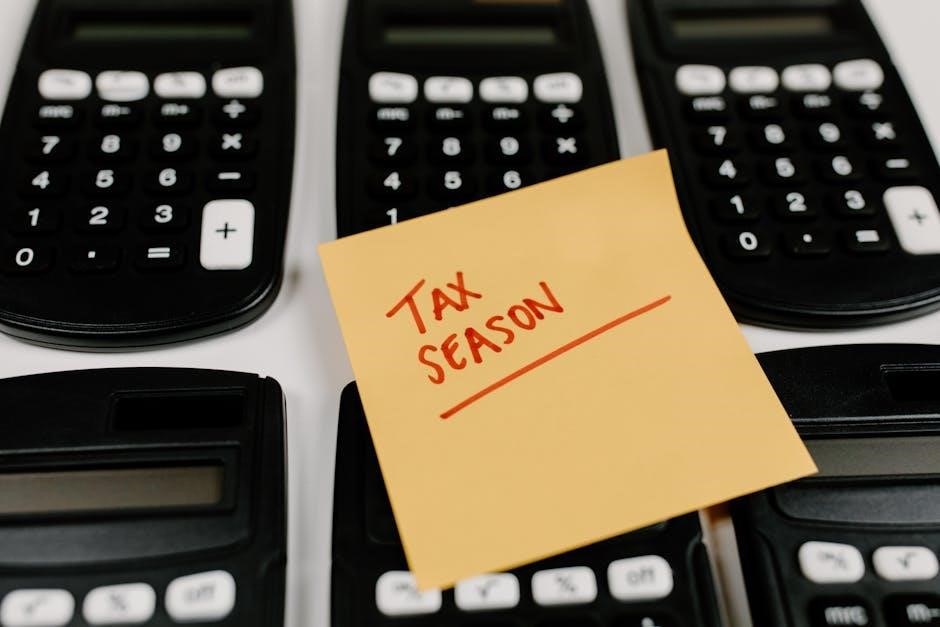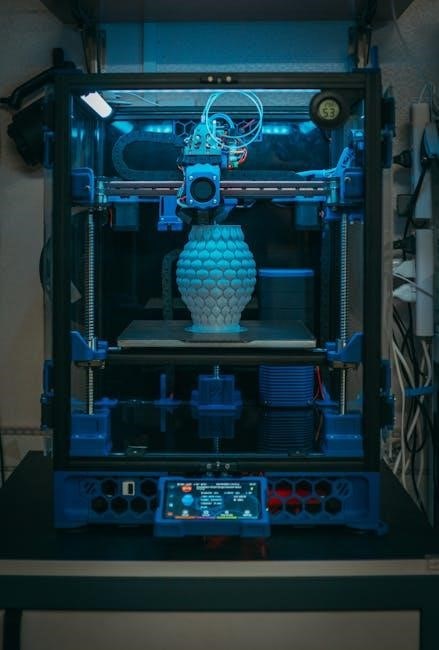Learning addition and subtraction of fractions is essential for problem-solving, using
online resources
and fractions worksheets to practice and understand concepts clearly every day.
Understanding the Concept of Fractions
To understand the concept of fractions, it is essential to know that a fraction represents a part of a whole, which can be visualized using
real-life examples
and diagrams.
The concept of fractions involves understanding the numerator and denominator, where the numerator tells us how many equal parts we have, and the denominator tells us how many parts the whole is divided into.
Using online resources, such as fractions worksheets and tutorials, can help to clarify this concept and make it easier to understand and work with fractions in different contexts, including addition and subtraction.
Fractions can be classified into different types, including proper fractions, improper fractions, and mixed numbers, each with its own unique characteristics and uses.
By grasping the concept of fractions, individuals can develop a strong foundation for learning more advanced mathematical concepts and solving problems that involve fractions.
Understanding fractions is crucial for various real-life applications, such as measuring ingredients for cooking, calculating distances, and understanding proportions.
Importance of Adding and Subtracting Fractions
The ability to add and subtract fractions is a fundamental skill that has numerous practical applications in various fields, including science, engineering, and finance.
Using
online resources
and fractions worksheets, individuals can develop this skill and improve their problem-solving abilities.
Adding and subtracting fractions is essential for calculating quantities, comparing measurements, and understanding proportions.
In real-life situations, such as cooking, building, and traveling, the ability to add and subtract fractions can help individuals make accurate calculations and informed decisions.
Moreover, mastering this skill can also enhance critical thinking and analytical abilities, which are valuable in many areas of life.
By learning to add and subtract fractions, individuals can develop a strong foundation for more advanced mathematical concepts and improve their overall mathematical literacy.
This skill is also crucial for solving problems that involve multiple steps and complex calculations, making it an essential tool for success in various endeavors.

Adding Fractions with Like Denominators
Using
- steps
to add fractions with like denominators is easy and straightforward every day.
Basic Rules for Adding Fractions with Like Denominators
To add fractions with like denominators, we need to follow some basic rules, using online resources and fractions worksheets to practice and understand concepts clearly.
The first step is to check if the denominators are the same, then we can add the numerators and keep the denominator the same.
We can use a simple formula to add fractions with like denominators: (a/b) + (c/b) = (a+c)/b, where a and c are the numerators and b is the denominator.
This formula can be applied to any fractions with like denominators, making it easy to add them together.
By following these basic rules and using the formula, we can easily add fractions with like denominators and simplify the result.
Using
- steps
to add fractions with like denominators is easy and straightforward, and with practice, it becomes second nature.
We can find many examples and exercises online to practice adding fractions with like denominators, and to improve our math skills.
Adding fractions with like denominators is an essential skill in math, and it is used in many real-life applications, such as cooking and measuring ingredients.
It is also used in science and engineering to calculate quantities and proportions.
By mastering the basic rules for adding fractions with like denominators, we can solve many problems and applications in math and science.
Overall, adding fractions with like denominators is a fundamental concept in math, and it is essential to understand and apply it correctly.
Examples of Adding Fractions with Like Denominators
We can find many examples of adding fractions with like denominators in real-life applications, such as measuring ingredients for cooking or calculating quantities in science.
For instance, if we have 1/4 cup of sugar and 1/4 cup of flour, we can add them together to get 2/4 cup or 1/2 cup of mixture.
Using
- examples
like this, we can practice adding fractions with like denominators and improve our math skills.
We can also use online resources and fractions worksheets to find more examples and exercises to practice.
Some other examples include adding 2/6 and 1/6 to get 3/6, or adding 3/8 and 2/8 to get 5/8.
By working through these examples, we can become more confident in our ability to add fractions with like denominators.
We can also use
visual aids
such as diagrams and charts to help us understand the concept of adding fractions with like denominators.
Overall, practicing with examples is an essential part of learning to add fractions with like denominators.
It helps us to develop our problem-solving skills and to apply the concept to real-life situations.
With practice and patience, we can master the skill of adding fractions with like denominators.

Adding Fractions with Unlike Denominators
Using
- steps
to find the least common multiple of denominators to add fractions with unlike denominators easily every day.
Finding the Least Common Multiple (LCM) of Denominators
To add fractions with unlike denominators, finding the least common multiple of denominators is crucial. This involves listing the multiples of each denominator and identifying the smallest multiple they have in common. Using online resources and fractions worksheets, students can practice finding the LCM of different denominators. The process can be broken down into steps, including listing the multiples of each denominator, identifying the common multiples, and selecting the smallest common multiple. By mastering this skill, students can confidently add fractions with unlike denominators. The use of
- ordered lists
and
- unordered lists
can help to organize the multiples and make it easier to identify the LCM. With practice and repetition, finding the LCM of denominators becomes a straightforward process, allowing students to focus on more complex fraction operations. Regular practice using fractions worksheets and online resources can help to reinforce this skill.
Converting Fractions to Have the Same Denominator
Converting fractions to have the same denominator is a critical step in adding and subtracting fractions with unlike denominators. This process involves multiplying the numerator and denominator of each fraction by a specific number, allowing the fractions to have a common denominator. Using
and images can help to visualize the conversion process. By converting fractions to have the same denominator, students can easily add or subtract the fractions. The conversion process requires a thorough understanding of equivalent fractions and the ability to identify the least common multiple of the denominators. With practice, students can master the skill of converting fractions to have the same denominator, making it easier to perform addition and subtraction operations with fractions. The use of online resources and fractions worksheets can provide students with ample opportunities to practice converting fractions.

Subtracting Fractions with Like and Unlike Denominators
Subtracting fractions with like and unlike denominators requires understanding of
- ordered steps
and fraction concepts clearly.
Rules for Subtracting Fractions with Like Denominators
To subtract fractions with like denominators, we need to follow specific rules, using online resources to guide us.
The first step is to ensure the denominators are the same, then we can proceed to subtract the numerators.
We must keep the denominator the same, and the result will be a fraction with the same denominator.
For example, to subtract 1/6 from 3/6, we perform the operation 3/6 ౼ 1/6, resulting in 2/6, which can be simplified to 1/3.
This rule applies to all fractions with like denominators, and it is essential to master this concept to solve more complex problems.
Using fractions worksheets and practice exercises, we can become proficient in subtracting fractions with like denominators, and then move on to more challenging topics, such as subtracting fractions with unlike denominators.
By following these rules and practicing regularly, we can develop a strong foundation in fraction subtraction and improve our overall math skills.
With consistent practice and review, we can become confident in our ability to subtract fractions with like denominators and tackle more complex math problems.
Examples of Subtracting Fractions with Unlike Denominators
Subtracting fractions with unlike denominators requires finding a common denominator, and there are several examples that illustrate this concept.
For instance, to subtract 1/4 from 3/6, we need to find the least common multiple (LCM) of 4 and 6, which is 12.
We then convert both fractions to have a denominator of 12, resulting in 3/6 = 6/12 and 1/4 = 3/12.
Now we can subtract, 6/12 ౼ 3/12, which equals 3/12, and this can be simplified to 1/4.
Another example is subtracting 2/3 from 5/8, where the LCM of 3 and 8 is 24.
We convert both fractions to have a denominator of 24, resulting in 2/3 = 16/24 and 5/8 = 15/24.
Now we can subtract, 16/24 ⎼ 15/24, which equals 1/24.
These examples demonstrate the process of subtracting fractions with unlike denominators, and with practice, we can become proficient in this area of math.
Using online resources and fractions worksheets, we can find more examples and practice exercises to help us master this concept.

Adding and Subtracting Mixed Numbers
Using
worksheets
and online resources to practice adding and subtracting mixed numbers every day.
Converting Mixed Numbers to Improper Fractions
To convert mixed numbers to improper fractions, we need to follow a few steps. First, we multiply the denominator by the whole number, then add the numerator. For example, to convert 2 3/4 to an improper fraction, we multiply 4 by 2 and add 3, resulting in 11/4. This process can be applied to any mixed number. Using online resources and fractions worksheets can help practice and understand this concept clearly. The formula for converting mixed numbers to improper fractions is (denominator * whole number) + numerator, then writing the result over the original denominator. By mastering this skill, we can easily add and subtract mixed numbers by converting them to improper fractions, making it easier to solve problems and understand the concept of fractions. We can find many examples and exercises on the internet to practice this conversion.